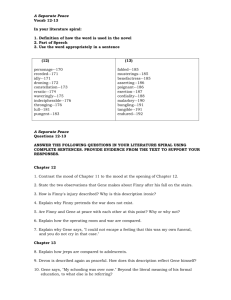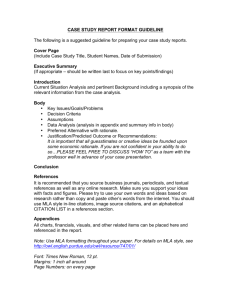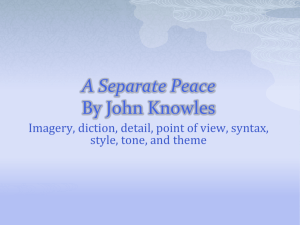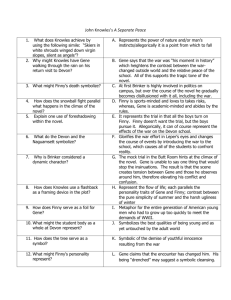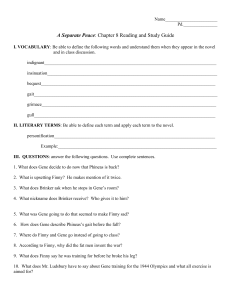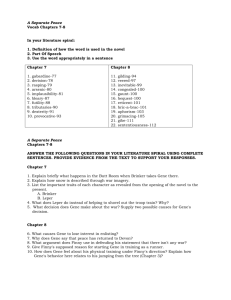Movements/topics
advertisement
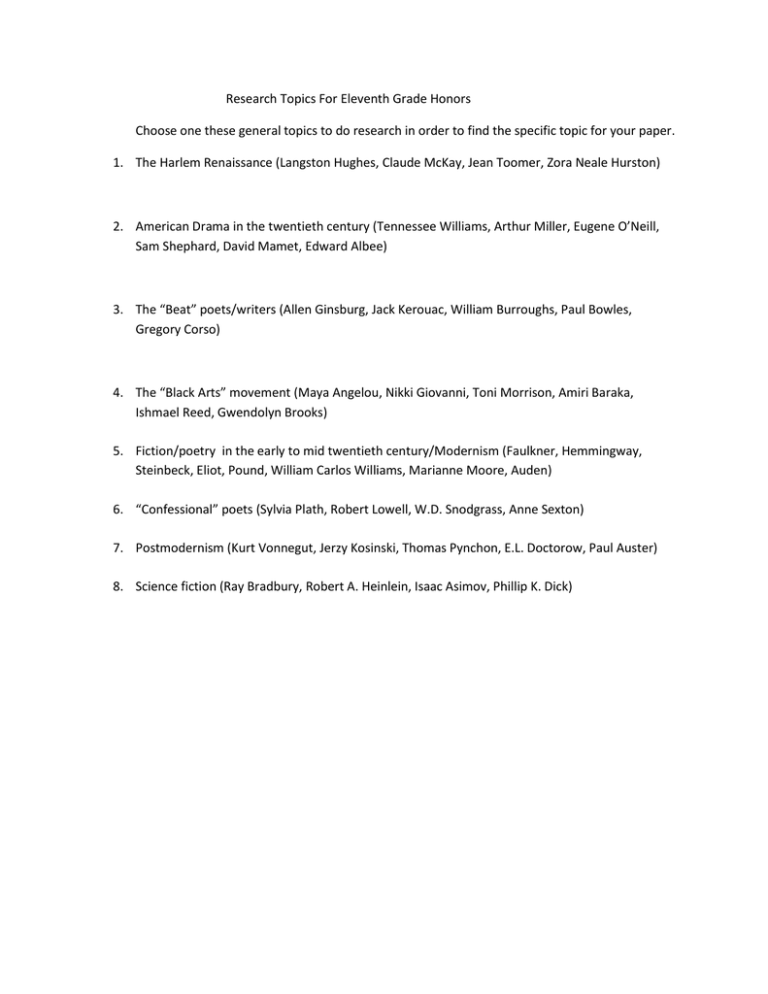
Research Topics For Eleventh Grade Honors Choose one these general topics to do research in order to find the specific topic for your paper. 1. The Harlem Renaissance (Langston Hughes, Claude McKay, Jean Toomer, Zora Neale Hurston) 2. American Drama in the twentieth century (Tennessee Williams, Arthur Miller, Eugene O’Neill, Sam Shephard, David Mamet, Edward Albee) 3. The “Beat” poets/writers (Allen Ginsburg, Jack Kerouac, William Burroughs, Paul Bowles, Gregory Corso) 4. The “Black Arts” movement (Maya Angelou, Nikki Giovanni, Toni Morrison, Amiri Baraka, Ishmael Reed, Gwendolyn Brooks) 5. Fiction/poetry in the early to mid twentieth century/Modernism (Faulkner, Hemmingway, Steinbeck, Eliot, Pound, William Carlos Williams, Marianne Moore, Auden) 6. “Confessional” poets (Sylvia Plath, Robert Lowell, W.D. Snodgrass, Anne Sexton) 7. Postmodernism (Kurt Vonnegut, Jerzy Kosinski, Thomas Pynchon, E.L. Doctorow, Paul Auster) 8. Science fiction (Ray Bradbury, Robert A. Heinlein, Isaac Asimov, Phillip K. Dick) Black Boy (1945) is an autobiography by Richard Wright. The author explores his childhood and race relations in the South. Wright eventually moves to Chicago, where he establishes his writing career and becomes involved with the Communist Party. A Separate Peace by John Knowles Gene Forrester, the protagonist, returns to his old prep school, Devon (a thinly-veiled portrayal of Knowles' own alma mater, Phillips Exeter Academy), fifteen years after he graduated to visit two places he regards as "fearful sites:" a flight of marble stairs and a tree by the river. First, he examines the stairs and notices that they are made of very hard marble. He then trudges through the mud to the tree. The tree brings back memories of Gene's time as a student at Devon. From this point, the plot follows Gene's description of the time span from the summer of 1942 to the summer of 1943. In 1942, he was 16 years old and living at Devon with his best friend and roommate, Phineas (nicknamed Finny). At the time, World War II is taking place, and has a prominent effect on the story. Gene and Finny, despite being polar opposites in personality, become fast friends at Devon: Gene's quiet, introverted intellectual personality complements Finny's more extroverted, carefree, athletic demeanor. During the time at Devon, Gene goes through a period of intense friendship with Finny. One of Finny's ideas during Gene's "Sarcastic Summer of 1942" is to create a "Super Suicide Society of the Summer Session," with Gene and himself as charter members. Finny creates a rite of initiation by having members jump into the Devon River from a large, high tree. He also creates a game called "blitzball" (from the German blitzkrieg) in which there is no winner. The Catcher in the Rye is a 1951 novel by J. D. Salinger.[3] Originally published for adults, it has since become popular with adolescent readers for its themes of teenage confusion, angst, alienation, language,[4] and rebellion.[5] It has been translated into almost all of the world's major languages.[6] Around 250,000 copies are sold each year, with total sales of more than 65 million.[7] The novel's protagonist and antihero, Holden Caulfield, has become an icon for teenage rebellion.[8] The novel was included on Time's 2005 list of the 100 best English-language novels written since 1923,[9] and it was named by Modern Library and its readers as one of the 100 best English-language novels of the 20th century. It has been frequently challenged[10][11][12] in the United States and other countries for its liberal use of profanity and portrayal of sexuality and teenage angst. It also deals with complex issues of identity, belonging, connection, and alienation. CP II American Literature Mr. Turner Research Paper Assignment: All students in grades nine through twelve are required to write a formal research paper following a specific format. I realize this makes us seem sadistic. Although we may indeed be sadistic, our real motivation is far less sinister. All colleges require the same format in most of the courses they offer. If you follow and understand the format now, it will be much easier later. Subject: any work of literature, theme or motif we have covered this year can be used. The paper must focus on LITERARY CRITICISM. Theme of the “American Dream” in Of Mice and Men, Death of a Salesman, or The Great Gatsby. The conflict between the individual and society in The Scarlet Letter. How a writer’s life influenced a particular work (how Mark Twain’s life experiences influenced Huckleberry Finn). Requirements: 3 – 5 pages, double-spaced, formal – third person perspective Font: size 12, Times New Roman 5 Citations, 5 sources (at least one book) Total points: 200 Due dates: Thesis statement: Friday 4/27 – 20 points Works cited/citations: Friday 5/4 – 40 points Introduction and outline: Friday 5/11 – 20 points Rough draft: Monday 5/21 – 20 points Final draft: Friday 6/1 – 100 points Honors III American Literature Mr. Turner Research Paper Assignment: All students in grades nine through twelve are required to write a formal research paper following a specific format. I realize this makes us seem sadistic. Although we may indeed be sadistic, our real motivation is far less sinister. All colleges require the same format in most of the courses they offer. If you follow and understand the format now, it will be much easier later. Subject: any author in your movement can be used. The paper must focus on LITERARY CRITICISM using a particular work of your author or a particular aspect of their work. Use of motifs to develop a specific theme in a work of literature. The conflict between the individual and society in The Scarlet Letter. How a writer’s life influenced a particular work (how Mark Twain’s life experiences influenced Huckleberry Finn). The concept of duality/dichotomy in A Separate Peace or Young Goodman Brown. How a specific author’s work was influenced by another. How a specific author’s work introduced an influential innovation. Requirements: 3 – 5 pages, double-spaced, formal – third person perspective Font: size 12, Times New Roman 5 Citations, 5 sources (at least one book) Total points: 200 Due dates: Specific Topic: Monday April 21 – 100 Points (HW) Works cited/Outline started: Monday April 28 – 100 points (HW) Outline/ Rough Draft of Introduction with Thesis Statement: Monday May 5 – 100 points (HW) Rough draft/citations: Monday May 12 – 200 points (HW) points Final draft: Monday May 19 – 100 (HW) points Major American Authors Nathaniel Hawthorne Edgar Allan Poe William Cullen Bryant Walt Whitman Emily Dickinson Ralph Waldo Emerson Henry David Thoreau Ernest Hemmingway F. Scott Fitzgerald Arthur Miller J. D. Salinger Robert Frost E. E. Cummings Edwin Arlington Robinson Edgar Lee Masters John Steinbeck Bret Harte Mark Twain Kate Chopin T. S. Eliot Amy Lowell William Carlos Williams Ezra Pound Langston Hughes Lorraine Hansberry Claude McKay Countee Cullen Research Questions 1. What have you learned about the particular movement in general? 2. What have you learned about the individual writers? (Their relationships, life experiences, personal and artistic philosophy, etc.) 3. Name and describe some of the major works from the movement. 4. Are there any subgenres? Science fiction has several. Or does the genre bleed into other genres (example: some consider Allen Ginsburg a “confessional poet” though he was definitely a beat)? How/why? 5. Which writer do you think you’ll concentrate on and why? 6. How was their work received at the time it was originally published? (Look up reviews and articles) How has that changed, if at all? 7. Does the work reflect anything in terms of historical context? Explain. THESIS RESEARCH PAPER SAMPLE RUBRIC Name ___________________________________________________________ Research Paper Title Points Earned Points Possible ________________________ _______________________ Research Paper Format Title Page 5 Title page formatted in MLA style Heading 5 Heading formatted in MLA style Outline 5 Outline follows organizational pattern of paper Page Numbering 5 Last name and page number on upper right hand corner of all pages after title page In-Text Citations 10 References follow MLA standards Works Cited Page 20 Source information complete, listed alphabetically. Indented second and subsequent lines; all MLA conventions followed. TOTAL 50 THESIS RESEARCH PAPER SAMPLE RUBRIC Name ___________________________________________________________ Research Paper Title Points Earned Points Possible ________________________ _______________________ Research Paper Format Title Page 5 Title page formatted in MLA style Heading 5 Heading formatted in MLA style Outline 5 Outline follows organizational pattern of paper Page Numbering 5 Last name and page number on upper right hand corner of all pages after title page In-Text Citations 10 References follow MLA standards Works Cited Page 20 Source information complete, listed alphabetically. Indented second and subsequent lines; all MLA conventions followed. TOTAL 50
